Week 11/2024: Queer history walk
A walk into the Queer History of Hobart
Week of 11 March 2024
This was a great week!
Monday was a public holiday and I took part in two wonderful activities later in the week. More to come on one of these.
The context
If you’re familiar with the history of LGBTIQA+ rights in Tasmania, or recent Tasmanian history for that matter, you’ll know who Rodney Croome is. He’s been LGBTIQA+ rights and law reform activist since the late 1980s, and was recognised as Tasmanian of the Year in 2015 for his work.
Rodney has developed a Queer History walk of Hobart, which he runs with fellow activist Martine Delaney during Pride Week. The 2023 event was profiled here.
Unfortunately, this year’s event was booked out before I had a chance to get into it, so I’d resigned myself to waiting until next year. But after our Pride March, my workplace’s LGBTIQA+ employee reference group organised for Rodney to offer a tour for our staff.
I was in!
The queer history tour
I’d seen Rodney a lot in the media over the years and it was great to finally hear him speak in person.
We started our walk outside of Parliament House, where the Parliament installed a park bench to recognise Tasmania’s progress towards equality for LGBTIQA+ people.
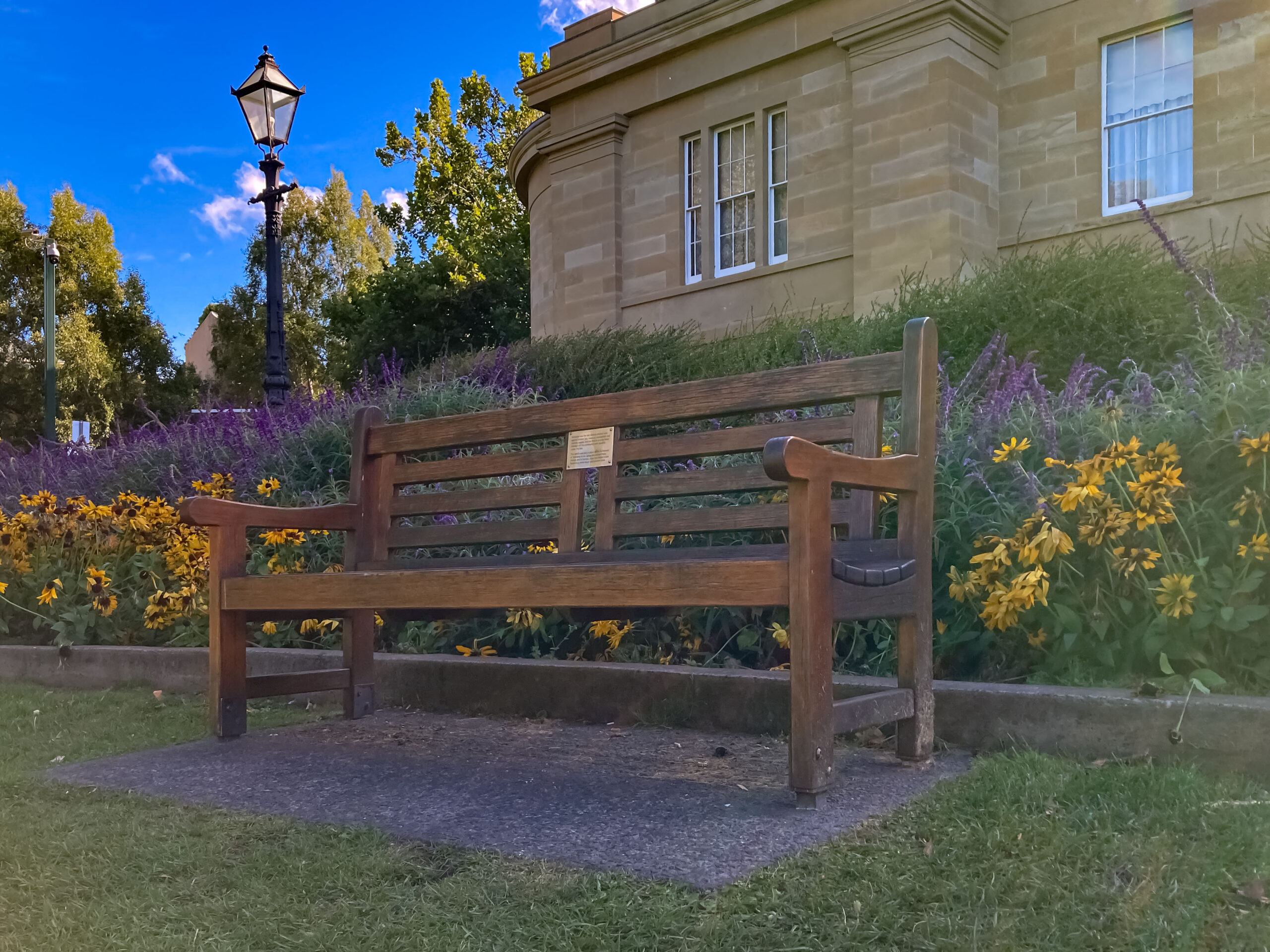
Although Tasmania was the last state to remove laws criminalising homosexuality (in 1997), it’s now one of the leaders in this space, including
- The Tasmanian government being the first state government to include the A in the acronym to recognise people identifying as asexual, agender or aromatic in 2023.
- Tasmania’s above the national average support for same sex marriage in the 2017 postal survey.
- In 2019, passing laws to make gender optional on birth certificates and to remove the requirement for transgender people to have surgery to have their gender recognised.
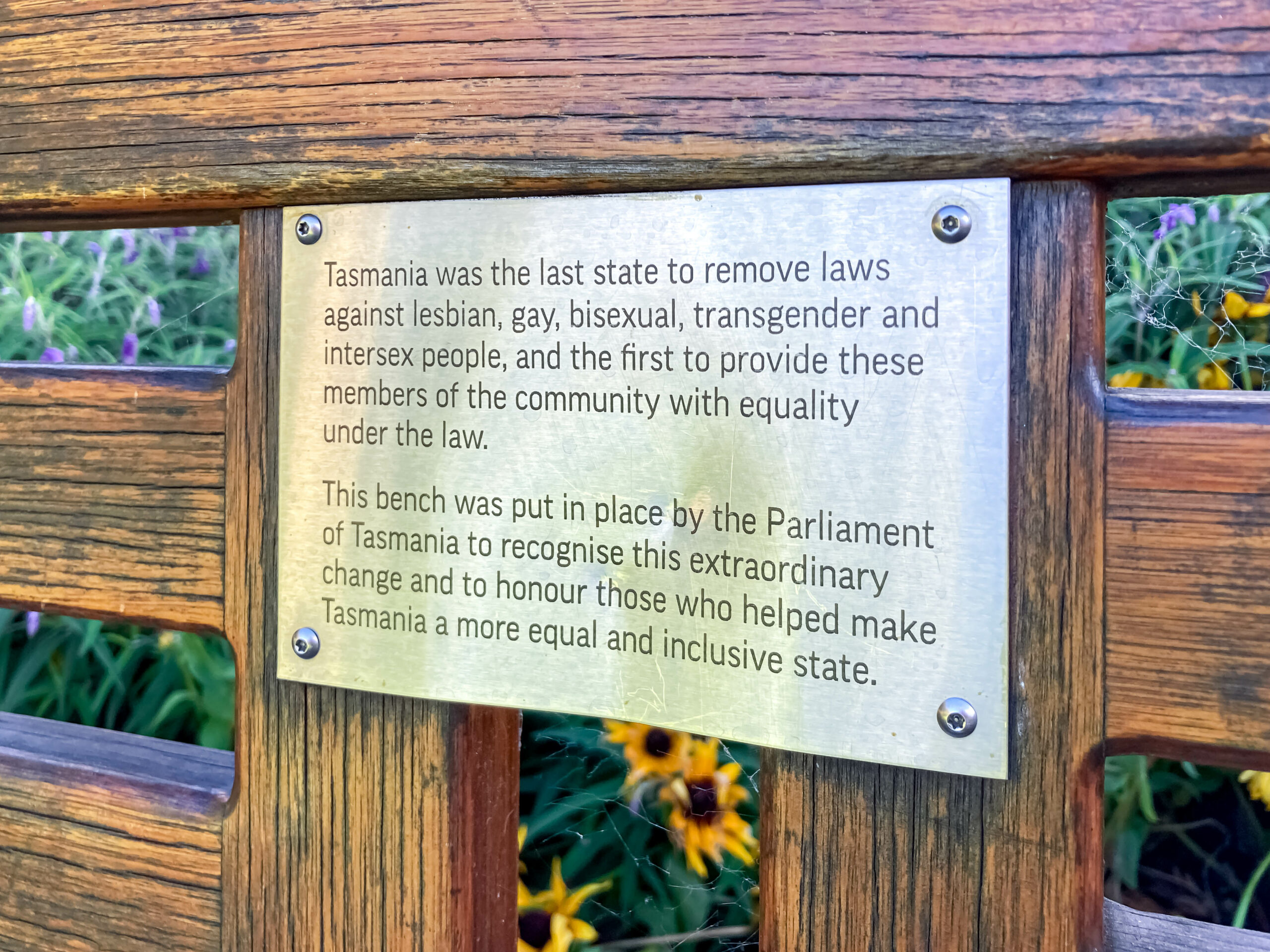
Some of the stories Rodney told I was familiar with, including the story of the Yellow Line protests, which I wrote about last year.
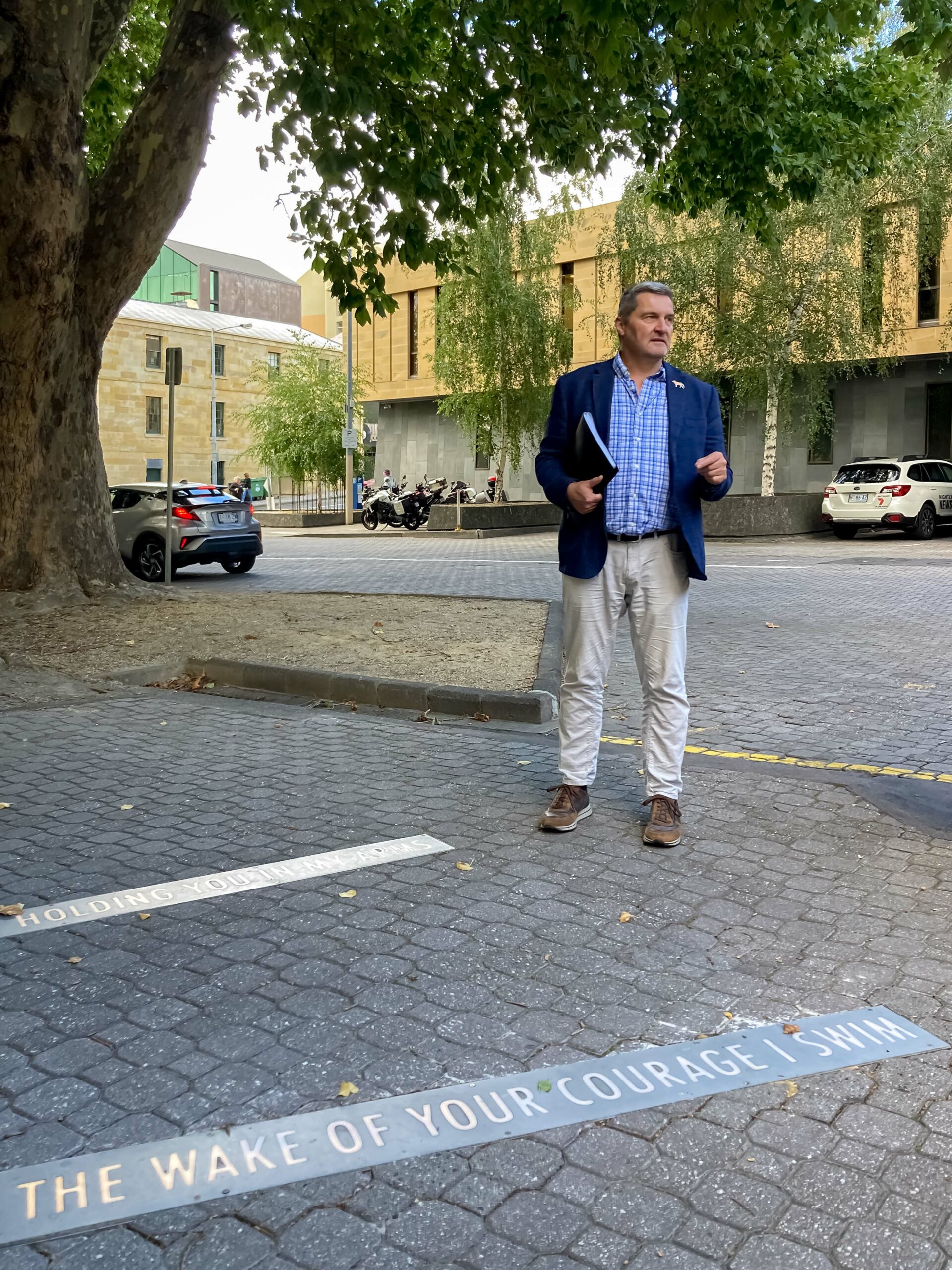
He mentioned some of the main gay bars in Hobart over the years, including one in Salamanca that my friends and I had accidentally stumbled into one night and found to be one of the most safe-feeling places in the city.
It was interesting to learn how other organisations would take in gay people and protect them from the law, including at least one church, who had offered a social justice group a room at the back of their building, and a hotel that had a gay bar out the back, behind the front bar where lawyers would congregate.
It was also interesting to learn that the building at 85 Macquarie Street (you might know it as the one with the massive poster of Senator Jonno Duniam out the front) . . . which in my vague memories once housed the CES . . . was once the Prince Cinema, at one time managed by the actress Louise Lovely.
Rodney was talking about gay and lesbian members of the arts community and spoke of Marie Bjelke Petersen, an author believed to have been gay. Marie, who was writing in Tasmania in the early to mid- 20th Century (and yes, she was part of that family), showed Louise her book Jewelled Nights. This novel was about a girl who dresses as a man and goes looking for work in the mines on the West Coast. Louise made it into a film in 1925, starring herself. It was filmed on the West Coast and in Hobart, but was a commercial failure.
There is a couple of minutes of surviving footage, which Rodney said are also screened at the Gaiety Theatre in Zeehan.
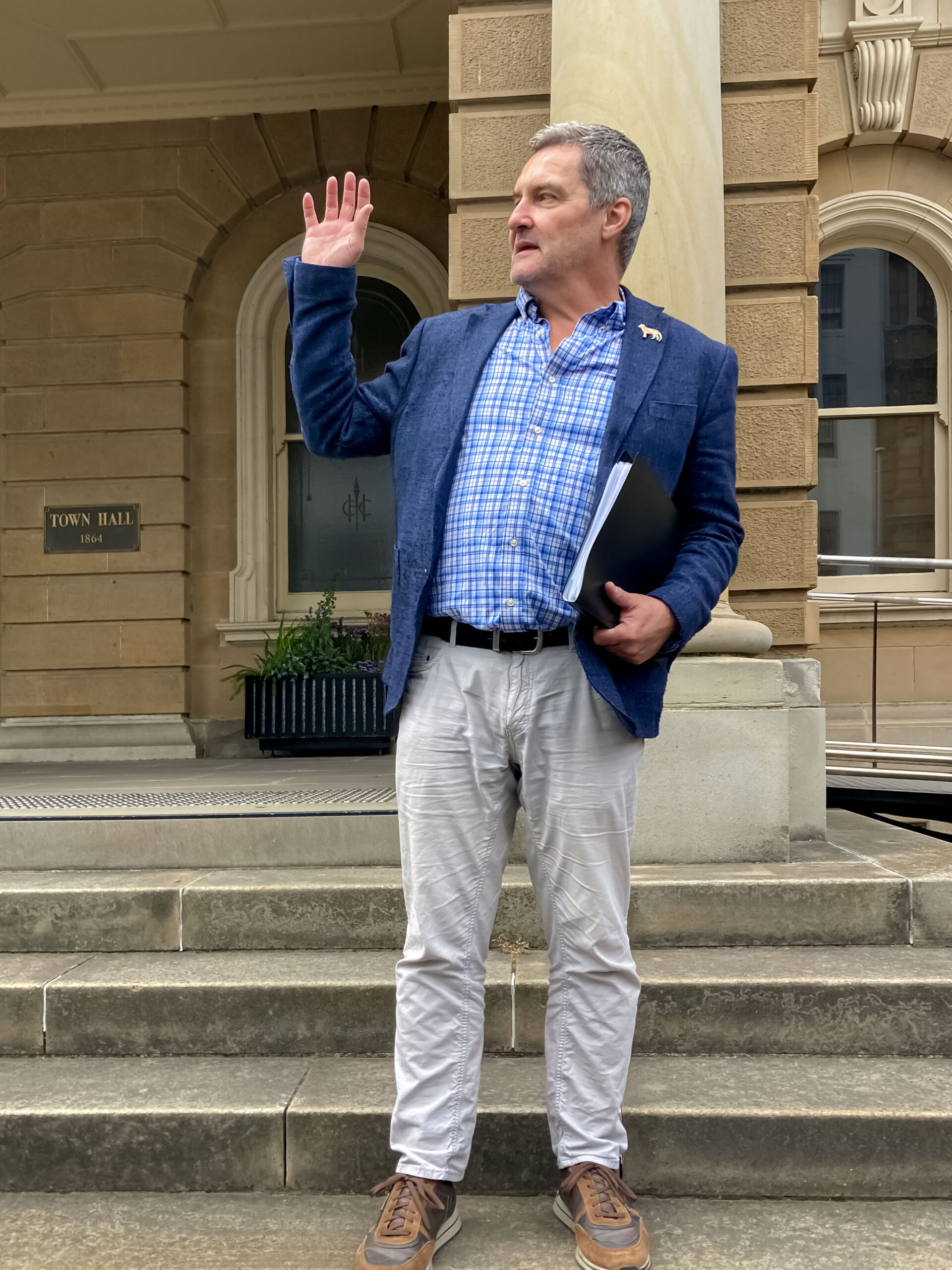
As Rodney said, stories about girls dressed as boys is all a bit Shakespearean, but Tasmania’s law prohibiting men from wearing women’s clothing after sunset was only repealed in 2000. And while this may seem on the surface humorous (I mean, who decides what constitutes women’s clothing for a start), it created very real harm for cross-dressing men and trans women who faced arrest and prosecution.
The impact
Most of this history is part of a massive story I will never be personally affected by, because it wasn’t happening to me. Growing up and then moving interstate before the laws changed I was blissfully unaware of how openly homophobic Tasmania was, and how, at least in some places, homophobia was invited.
Hearing Rodney’s stories, reading Hannah Gadsby’s account of growing up in the same past of Tasmania I did, and delving further into what it was really like for LGBTIQA+ people back then, I’m horrified and deeply saddened, and feel ashamed at my lack of awareness.
But I can’t change what I didn’t know. I’ve know a lot more now and have spent a lot of time since the tour reflecting on what I’ve been learning.
Tasmania has come a long way from anti-gay rallies like the ones held in Ulverstone in the 1990s but there’s still work to do. LGBTIQA+ people are still over represented in mental health statistics, self-harm and suicide, for example. There’s a need for anti-conversion practice legislation, which I mentioned in my Pride Week post. That Bill will have been caught up in the Tasmanian election this month so what will happen to it, I don’t know. But NSW has recently followed Victoria and ACT in banning this practice, and we need to do it too.
The University of Tasmania’s 2021 survey of LGBTIQA+ Tasmanians gives an excellent picture of what’s good for LGBTIQA+ people living in Tasmania and where more needs to be done.
I want to thank Rodney for putting on the tour for us. When I mentioned I’d missed the TasPride tour and was thankful he’d done this tour for us, Rodney noted that each tour is different. And having Martine as a second tour guide would provide a different perspective, so I’m going to try and get into next year’s Pride Week tour too.
I also want to thank him and the countless other advocates who have worked to make Tasmania a more inclusive place than it once was. While there is still much to be done, and still a lot of hurt anger and frustration for many community members, their work means the world is very different for LGBTIQA+ people growing up now than it was when I was younger.
Week 11 summary
Habit tracker
- 9.30 shutdown: 5/7 days
- 8,000 steps: 7/7 days
What was the best thing about this week?
The Queer History walk and another event that I’ll write about later.
I was also excited to find in the library my great great grandfather’s employment history with the Tasmanian Rail Service. This dates back to 1885 and has helped me narrow down the date when his family arrived in Tasmania.
What did I notice this week?
I liked this reflection.
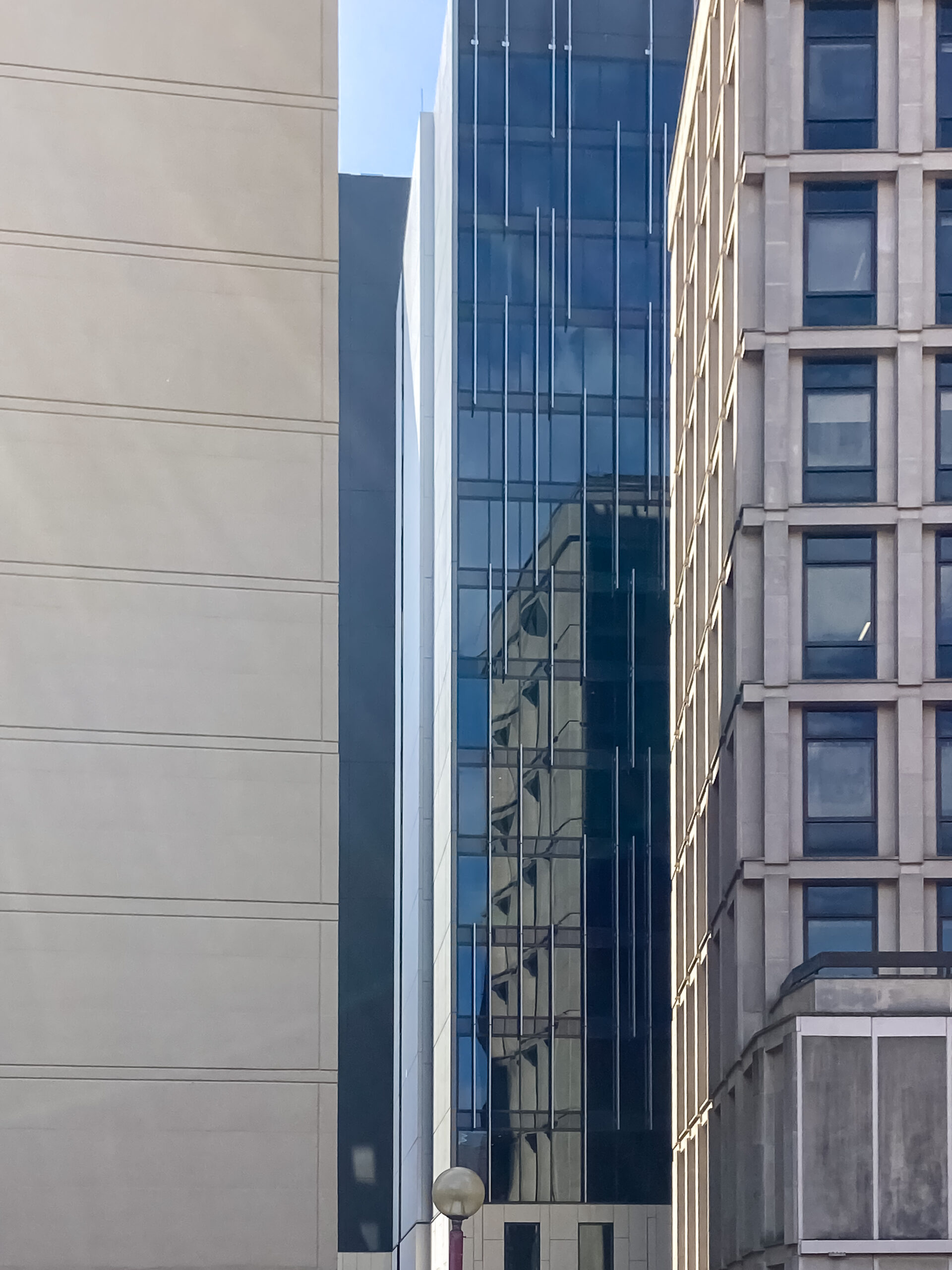
What did I learn this week?
The first reference to putting hundreds and thousands on buttered bread (aka fairy bread) was in the Hobart Mercury in 1929.
But is this what the term actually means? Curiouser and curiouser.
What I’m reading this week
- The Happiness Trap by Russ Harris
- How To Win Friends And Manipulate People by George Mladenov